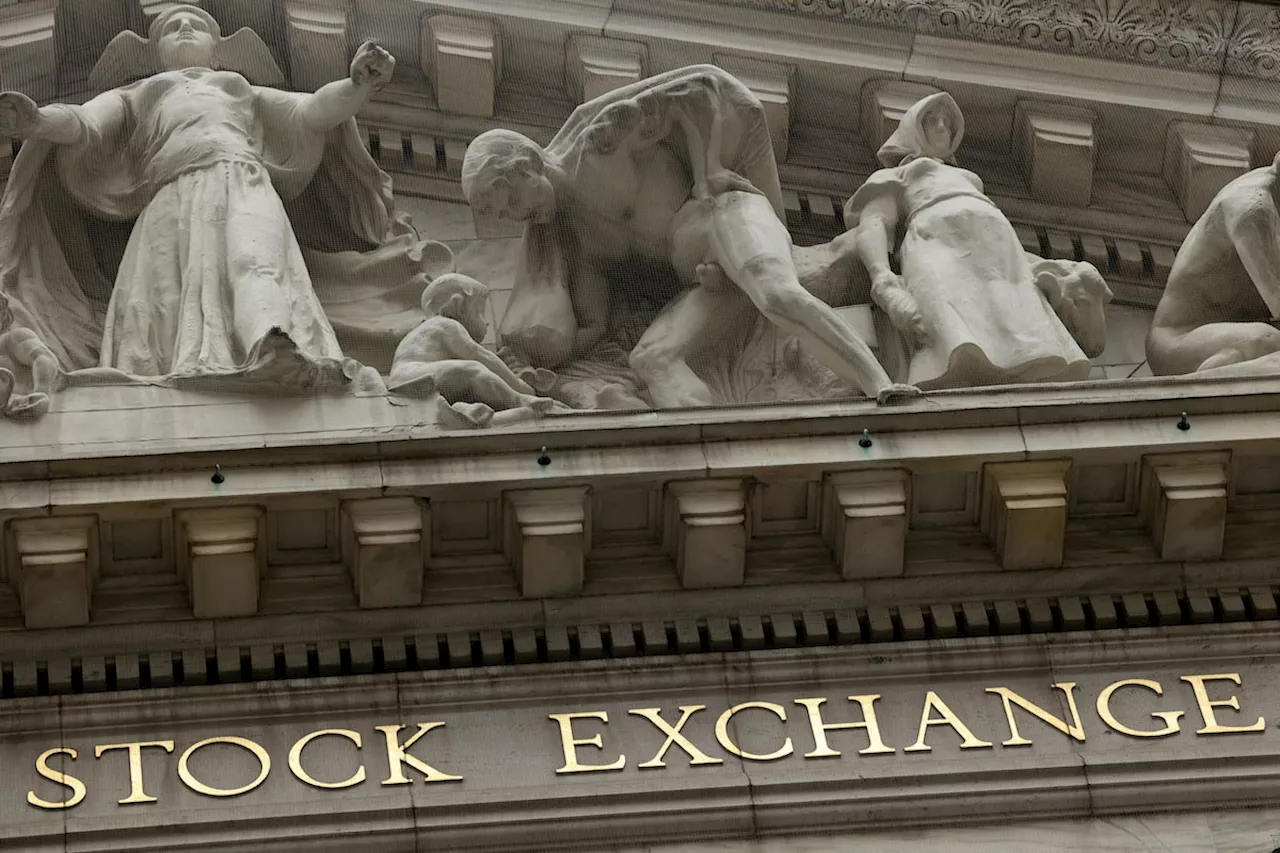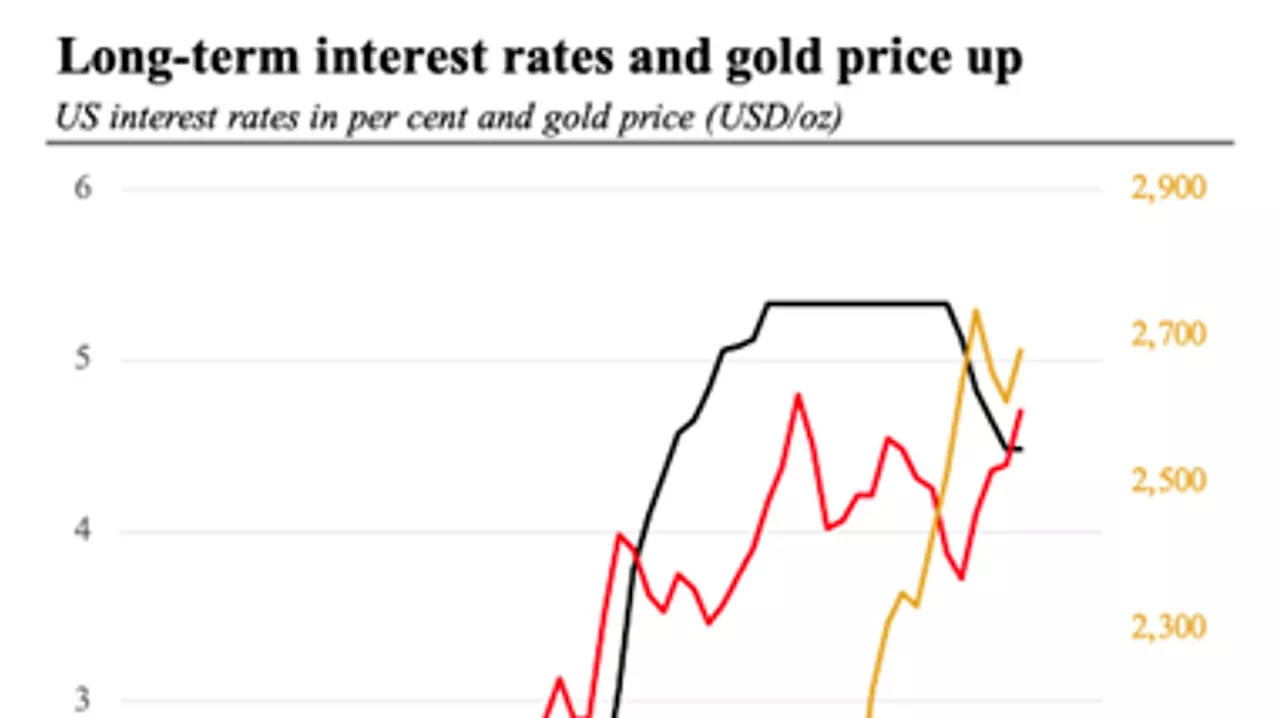Bond yields are soaring worldwide, raising concerns about potential economic instability. The text explores the various factors driving this trend, including investor expectations of economic growth, fears of declining credit quality, and the unsustainable growth of global debt. It analyzes the potential consequences of sustained or rising interest rates, highlighting the risks to borrowers, businesses, and the entire economy.
Bond yields are on the rise globally, a trend observed in the United States, Europe, and Japan. While the U.S. Federal Reserve has reduced its key interest rate from September 2024 to the present day, long-term bond yields have defied the typical pattern and instead surged. The yield on the 10-year U.S. Treasury bond has jumped nearly a full percentage point, from 3.8% to 4.7%, reaching its highest level since October 2023. The yield on 30-year U.S.
government bonds has climbed close to 5%, a record high since the spring of 2007.This upward trajectory in bond yields could stem from several factors. One possibility is that investors anticipate stronger economic growth, a scenario generally viewed as positive. Alternatively, investors might be apprehensive about a decline in the creditworthiness of borrowers or a rise in future inflation, a development that would signal serious economic challenges. The global debt landscape is a key concern. The Institute of International Finance (IIF) estimates that global debt reached 323 trillion U.S. dollars in the third quarter of 2023, equivalent to 326% of global economic output. While this figure is roughly 30 percentage points lower than its peak in 2020/2021, it remains exceptionally high. This elevated debt ratio is particularly worrisome because it has accumulated during a period of historically low interest rates, largely driven by central bank policies. The existing debt has been refinanced at favorable borrowing costs, but the recent rise in interest rates now exerts increasing pressure on borrowers, impacting households, businesses, and especially governments (whose debt, ultimately, is borne by taxpayers).The ramifications of sustained or rising interest rates extend beyond borrowers. The entire economy can be adversely affected. As interest rates climb, many entrepreneurs find that their investments, made during periods of artificially low rates, are no longer viable in a higher-yield environment. This can lead to corporate bankruptcies, job losses, and a general economic slowdown, further worsening the economic situation and reducing the economy's debt sustainability. Regional variations in the reasons behind rising bond yields are likely. For instance, the U.S. might see higher yields as a reflection of the expectation that economic expansion will accelerate under the new presidency of Donald J. Trump. An increase in U.S. interest rates can also influence yields in other currency areas, particularly Europe. However, it is crucial not to dismiss the possibility that investors are increasingly concerned about credit quality, especially the quality of government debt. This concern might stem from anticipation that politicians will continue with their unsustainable deficit spending policies. The potential consequences are alarming. A dramatic sell-off in government bond markets, reminiscent of the UK government bond crisis in September 2022, could quickly destabilize the entire financial system. This episode demonstrated how swiftly a government bond market collapse can occur, threatening to trigger a domino effect, leading to an economic meltdown and potentially even the collapse of the fiat money system. The underlying issue is that, within the current fiat money system, government debt functions as a Ponzi scheme. Governments borrow without the intention of ever fully repaying their debts. Instead, the strategy relies on replacing maturing debt with new debt, and continually borrowing more. This scheme operates as long as investors maintain confidence that buyers for government bonds will materialize not only today but also in the future. Investors purchase government bonds today based on the expectation that there will be future buyers for newly issued bonds, which the government will use to settle maturing obligations.However, if investors begin to doubt the existence of future buyers willing to finance the escalating debt burden, the Ponzi scheme teeters on the brink of collapse. This was the situation that nearly unfolded during the UK gilt sell-off in September 2022 before the Bank of England intervened. While central bank bailouts provide a temporary fix, they are inherently problematic. They not only encourage reckless behavior among investors (overborrowing and lending at excessively low rates, further exacerbating debt accumulation) but also lead to a perception that central bank expansion of the money supply is the least undesirable policy during crises. This fosters an environment where high inflation or, in the worst-case scenario, hyperinflation becomes the dominant economic reality.
Bond Yields Interest Rates Global Debt Economic Growth Inflation Credit Quality Fiat Money System Ponzi Scheme Central Bank Intervention
Canada Latest News, Canada Headlines
Similar News:You can also read news stories similar to this one that we have collected from other news sources.
 Inflation report could rattle U.S. markets after bond yields climbMajor banks due to report Q4 results in coming week
Inflation report could rattle U.S. markets after bond yields climbMajor banks due to report Q4 results in coming week
Read more »
 Gold defies headwinds, nears $2,700/oz despite surging dollar and bond yieldsThe Kitco News Team brings you the latest news, videos, analysis and opinions regarding Precious Metals, Crypto, Mining, World Markets and Global Economy.
Gold defies headwinds, nears $2,700/oz despite surging dollar and bond yieldsThe Kitco News Team brings you the latest news, videos, analysis and opinions regarding Precious Metals, Crypto, Mining, World Markets and Global Economy.
Read more »
 Bond Yields Surge Amid Inflation Fears and Trump UncertaintyGovernment bonds face pressure and the U.S. dollar holds steady near its highest point in over a year. Concerns about rising inflation, reduced likelihood of interest rate cuts, uncertainty surrounding President-elect Donald Trump's policies, and the prospect of increased debt sales drive global bond yields upward. Global markets react with mixed performances, while investors await crucial employment data from Canada and the U.S.
Bond Yields Surge Amid Inflation Fears and Trump UncertaintyGovernment bonds face pressure and the U.S. dollar holds steady near its highest point in over a year. Concerns about rising inflation, reduced likelihood of interest rate cuts, uncertainty surrounding President-elect Donald Trump's policies, and the prospect of increased debt sales drive global bond yields upward. Global markets react with mixed performances, while investors await crucial employment data from Canada and the U.S.
Read more »
 Dollar Strengthens on Rising Yields, Trump Tariff Worries Fuel FX VolatilityThe U.S. dollar strengthened on Thursday, driven by rising Treasury yields and concerns about potential Trump tariffs. The pound and euro weakened, while the yen gained ground. The market awaits clarity on Trump's economic agenda and its potential impact on inflation and growth.
Dollar Strengthens on Rising Yields, Trump Tariff Worries Fuel FX VolatilityThe U.S. dollar strengthened on Thursday, driven by rising Treasury yields and concerns about potential Trump tariffs. The pound and euro weakened, while the yen gained ground. The market awaits clarity on Trump's economic agenda and its potential impact on inflation and growth.
Read more »
 China Faces Risk of 'Japanification' as Bond Yields PlungeChina's long-term bond yields are now lower than Japan's, raising concerns about the country facing a similar economic stagnation. The decline in Chinese yields mirrors Japan's experience with deflation and sluggish growth for decades.
China Faces Risk of 'Japanification' as Bond Yields PlungeChina's long-term bond yields are now lower than Japan's, raising concerns about the country facing a similar economic stagnation. The decline in Chinese yields mirrors Japan's experience with deflation and sluggish growth for decades.
Read more »
 Global Stocks Decline Amid Rising YieldsGlobal stock markets experienced a decline on Tuesday, marking a potential fourth consecutive day of losses. Elevated U.S. Treasury yields contributed to the downturn, dampening the positive sentiment that characterized much of the year.
Global Stocks Decline Amid Rising YieldsGlobal stock markets experienced a decline on Tuesday, marking a potential fourth consecutive day of losses. Elevated U.S. Treasury yields contributed to the downturn, dampening the positive sentiment that characterized much of the year.
Read more »
